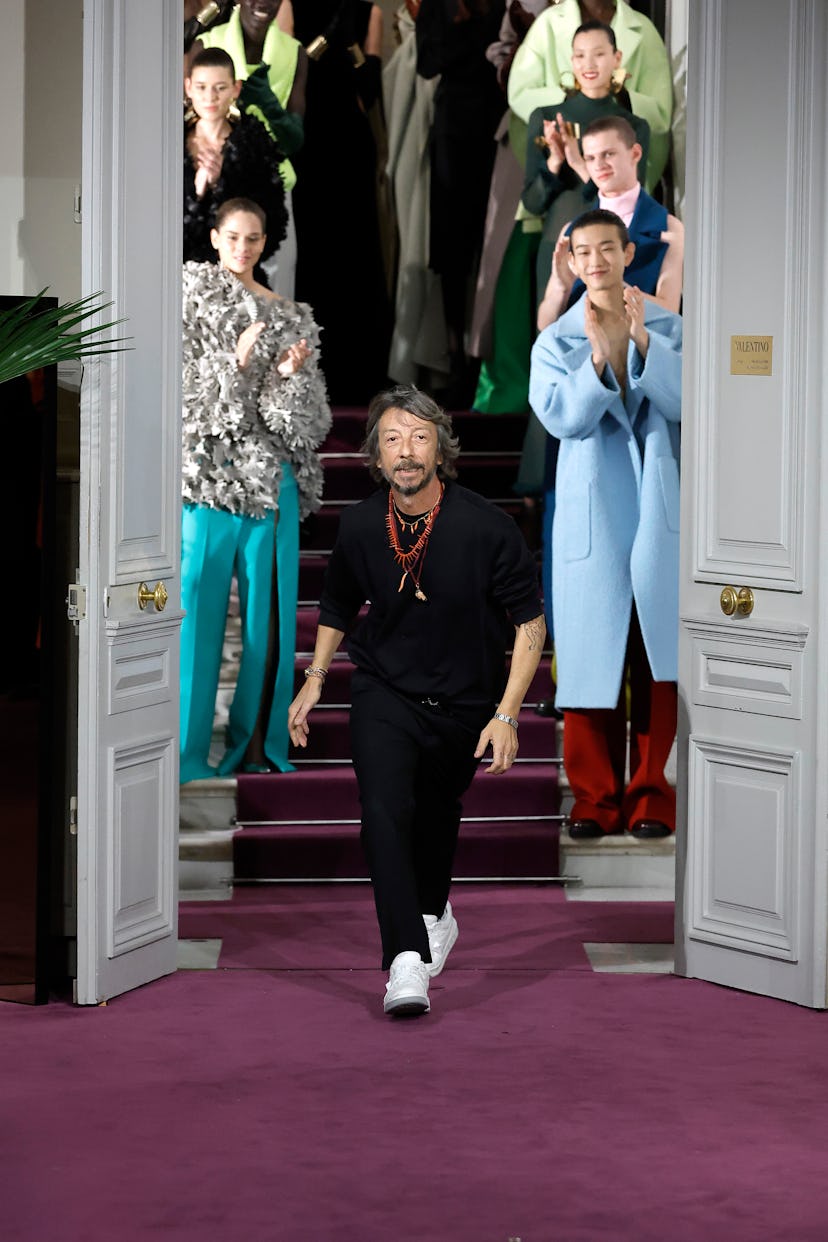Pierpaolo Piccioli Is Leaving Valentino After 25 Years

Pierpaolo Piccioli is departing Valentino after a quarter of a century at the house and eight years as the luxury house’s sole creative director. The news was initially reported by WWD, and was later confirmed by Valentino executives and Piccioli himself.
“I am grateful to Pierpaolo for his role as creative director and for his vision, commitment and creativity that have brought the Maison Valentino to what it stands for today,” said Jacopo Venturini, chief executive officer of the house. Rachid Mohamed Rachid, chairman of Valentino added, “We extend our deepest gratitude to Pierpaolo for writing an important chapter in the history of the Maison Valentino. His contribution over the past 25 years will leave an indelible mark.”
Piccioli too, made a statement, saying, “Not all stories have a beginning or an end, some live a kind of eternal present that shines so bright that it won’t produce any shadows. I’ve been in this company for 25 years, and for 25 years I’ve existed and I’ve lived with the people who have woven the weaves of this beautiful story that is mine and ours.” He continued, thanking Valentino Garavani and Giancarlo Giammetti as well as “every single person who made this possible in one way or another.” He ended his statement adding, “it was a privilege and an honor to share my journey, and my dreams, with you.”
The designer started his career at Valentino in 1999 when he was selected, alongside Maria Grazia Chiuri, to boost the brand’s accessory category, a role in which they were both successful. They made their way up the ranks, becoming joint creative directors of accessories, and in 2008, creative directors of the brand. When Chiuri left Valentino to head Dior in 2016, Piccioli was named the sole creative director, a role he has held onto ever since.
Models at Valentino’s fall/winter 2022 couture presentation.
Throughout his time at Valentino, Piccioli has stayed true to the elegant legacy solidified by the brand’s namesake, while simultaneously ushering the house into a new age. An emphasis on inclusivity and diversity has led to a new slate of brand ambassadors—like Formula 1 driver Lewis Hamilton and model Adut Akech—as well as runways filled with models ranging in age, race, and size. His fall/winter 2022 couture show, set on the Spanish Steps in Rome, was kicked off by model Alaato Jazyper from South Sudan. “I really wanted to have people in that show who exemplified big societal changes, people who 30 years ago might not have been allowed to walk the runway,” he told W in 2022. “There were guys wearing feminine dresses and more than 40 Black girls. In such a symbolic Italian city, it was going against every wave of xenophobia and homophobia. It was very classical, very couture, with ruffles and bows, very much in the Valentino vocabulary, but actually, it was a big ‘fuck you’ to a traditional kind of beauty, to all the conservatism, the reactionaries of the moment. It was about giving a stage—a big, institutional stage—to people who are not usually allowed to be in such a central space of fashion.”
It wasn’t all social commentary, however, but money-making as well. Under the designer, Valentino became a billion-dollar brand, likely helped by Piccioli’s emphasis on the ever-growing category of streetwear. The designer set many trends during his tenure at the house. His use of the new Pantone shade PP Pink in his fall 2022 collection painted the entire industry in the bright hue, and led to the eventual takeover of Barbiecore. His clothes have been worn by the biggest stars of the age on the red carpet, including Zendaya, Glenn Close, and Jennifer Lopez. But these big names have never stopped Piccioli from making a statement. The yellow jumpsuit and teal cape Piccioli placed Frances McDormand in for the 2018 Met Gala was one of the most talked-about looks of the night. And his brand ambassador Florence Pugh has become known for attending events in nipple-baring Valentino dresses, much to the chagrin of the Internet.
Through all of that, Piccioli also remained focused on couture, giving a jumpstart to the dying industry. “To me, couture is an instrument to say in an even louder way what I believe in, what I stand for,” he said. “Couture is pure as a process, as an approach, so when you generate attention with couture, it can have a bigger impact than with other means of expression.” And while many designers are happy to take sole credit for their artistic creations, Piccioli was sure to always recognize the seamstresses who helped him create his collection every season, bringing them out on the runway at the end of each presentation.
Piccioli with his team following the Valentino fall/winter 2023 couture show.
At 56, it seems unlikely that Piccioli will hang up his sewing kit for good, but as of now, the designer has not announced his next step. A successor at Valentino has yet to be named, though rumors are already circling around Alessandro Michele, or possibly the return of Chiuri to Valentino. Since 2012, Valentino has been owned by Qatari investment fund Mayhoola. Though, last summer Kering, the fashion conglomerate that also owns Saint Laurent and Gucci, bought a 30 percent stake with an aim to buy the rest by 2028. Because of that the recent appointment of Sabato De Sarno at Gucci and Séan McGirr at McQueen (another Kering brand) could suggest a precedent where a more unknown name will climb the ranks from behind the scenes to take over a top spot.